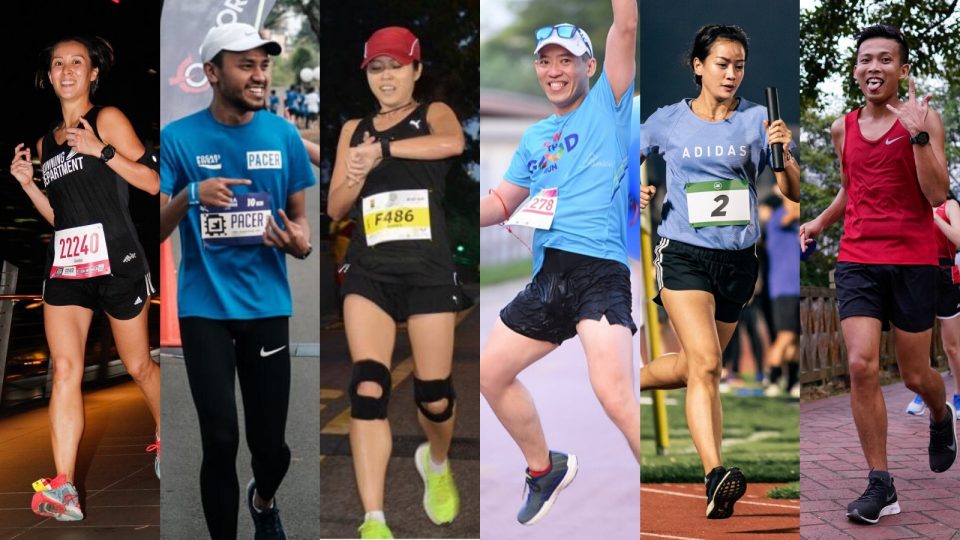Looking to level up your training or aiming to excel as a standout pacer yourself? You’re in the right place!
In this dynamic feature, we’re thrilled to present you with insights from six exceptional running pacers who’ve truly mastered their craft. They’re here to share invaluable tips and advice that will equip aspiring pacers with the skills they need and empower runners to dramatically enhance their performance.
So, ready to delve into the fascinating world of pacing? Join us on this exciting journey, packed full of enriching anecdotes and tips on how to become a good pacer. Prepare to be inspired and informed!
Table of Contents
What is a Pacer Runner?
A pacer runs at a predetermined speed during a race, usually in long-distance events. Other runners aim to keep pace with this individual to ensure they’re running at their desired speed.
A good pacer is a steady, consistent runner focused on maintaining their speed and assisting other runners in achieving their goals.
How to Train with a Pacer?
Running with a Pacer
Running alongside a pacer allows you to concentrate solely on your run, free from distractions, and without having to expend your mental energy monitoring your pace. You simply keep your eyes on the pacer, pay attention to your running form, and listen to your body’s feedback.
If you’ve set a goal to finish a race within a specific time, a pacer can help ensure you meet your target. If you’re new to distance running, a pacer can provide advice on various subjects mid-run, like how much to hydrate along the route or the best strategies to tackle hills and course turns.
Long Distance Pacing
Long-distance pacers typically participate in marathons or other distance events, aiming to finish within a specific time frame. For example, there may be several pacers each targeting different completion times, ranging from under three hours to five or six hours.
Runners align with a pacer’s group at the start and follow the pacer throughout the race. Pacers train to maintain consistent splits or speeds from start to finish, regularly checking their times and making necessary adjustments if they are running too fast or too slow.
Joining a pacer’s group as a newbie allows you to glean advice from experienced runners. Pacers often encourage and motivate group members, spurring them on to cross the finish line.
1. Astrid Levi
Bio: Female Singaporean living in Jakarta, Indonesia. Preschool Educator.
Following the birth of her two boys, Astrid found herself 14 kg heavier during her third pregnancy. Eager to shed the weight, she tried various methods – from healthy catering and slimming coffee and tea to high-intensity workouts at a local gym.
However, these efforts had little impact on her weight. In 2018, her father signed her up for a running race, a challenge that intrigued and motivated her, marking her first steps into the world of running.
Initially, she was unsure about how to approach this new sport. So, she sought guidance from a coach and joined a running community. This immediately sparked a passion for running within her. As an unexpected bonus, she started to lose the weight gained during pregnancy through her new running regimen.
Since then, Astrid has been taking the sport more seriously, investing time in training with coaches and pushing herself with strength training among other activities. Along the way, she has formed a strong bond with many like-minded individuals who have now become her trusted running companions.

RS: What makes you want to become a Pacer?
Astrid: I became a pacer one year into my running journey. I had participated in many running races and even claimed a podium prize once.
My coaches have taught me so much, from providing me with a customized running regimen to sharing their wisdom and advice. Additionally, I’ve gained many insightful and meaningful experiences from my running community.
There came a point when I felt that my cup was overflowing. I needed to share this knowledge, experience, and, of course, my joy and happiness in running with others.
So, when I was approached by an event organiser to be a pacer, I seized the opportunity immediately! It was a chance for me to give back to the running world.
RS: What are the requirements to be a good pacer?
Astrid: First of all, when you become a pacer, you will not receive the glory of going up on the podium to get a prize because you are not competing in that race.
Thus, there is a part of you that needs to accept that you are there in a race not to gain fame or compete, but to serve, volunteer, and give your best, not for yourself, but for others.
Discipline, consistency, and focus are necessary as a pacer trains to be one, but most importantly, humility is crucial in performing this act of service.
A pacer also needs to offer support, cheer on runners, and maintain a positive vibe. You must have the energy to keep motivating and encouraging runners to cross the finish line.
RS: Being a newbie, what are the difficulties you faced as a pacer?
Astrid: During training, we run in different places, at different times, and for different distances. Our group of pacers is trained equally so we could be placed at any distance and time during the race. So, this posed a challenge for me as a newbie to adapt to running at a constant pace as and when required.
The running programme our coach provided was not designed to make us run faster, but rather to train us to be consistent and focused on our distances and time, right down to the second.
RS: To boost or enhance your running performance for races, what kind of training do you guys undergo to improve together as a team?
Astrid: We are given an online program that we follow individually, but we also meet once a week for a face-to-face session with our coach where we train together, learn from the coach, and share our running journeys with each other.
We also stay connected through our WhatsApp group where we post our daily meals in order to fuel our bodies with the best nutrition, thus enhancing running performance and recovery.
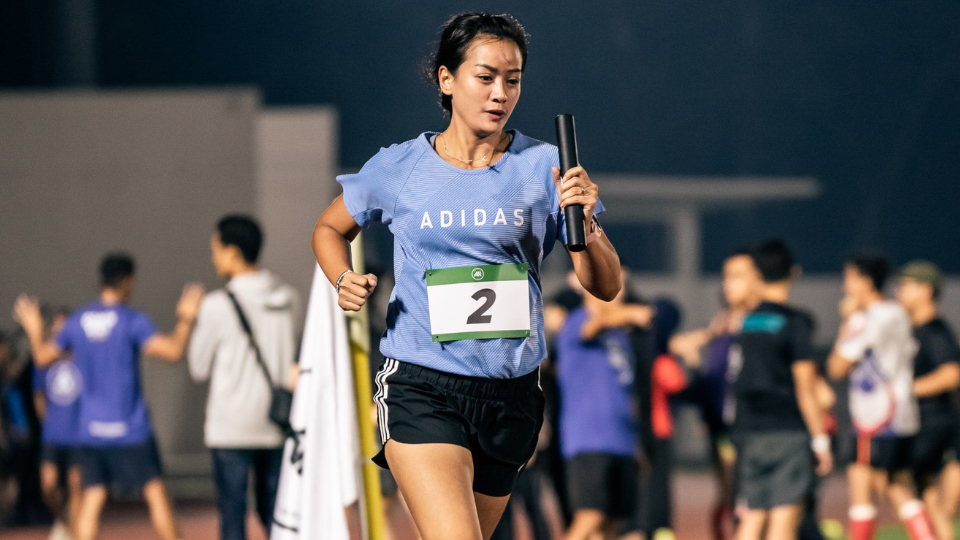
Share your joy of running with the people around you by being a pacer.
Astrid Levi
RS: What is the most memorable moment throughout your time in the Pacer group?
Astrid: The most memorable moment would be on the day of our duty. We arrived at the venue, prepared ourselves with pep talks, warmed up and such, then the girls decided to prep themselves up by braiding their hair and doing small touch ups. We were indeed very nervous, so that was how we tried to ease the anxiety and laugh it off at the same time.
RS: There are always ups and downs in a team, how do you all deal with and overcome hardship together?
Astrid: We train together. We run together. We sweat together. We laugh together. We know this job is only temporary. We only have this short period to train together as a team of pacers, with our coach, so we try to minimise conflicts as much as possible within the team.
Even if there were any, the coach and event organiser were quick to resolve them. And fortunately for all of us, we emerged stronger than before.
RS: What is one thing that has helped you throughout your running journey?
Astrid: Running is not just about running. It’s about training, eating right, getting enough sleep and, of course, forming lasting friendships. Once you realise that you have a wealth of knowledge and experiences, you’ll want to share them with others.
That was my way of sharing my joy of running with the people around me. You progress in your running journey, and you share that achievement with others, so they can be motivated to be the best versions of themselves.
RS: Do you have any advice for newcomers in the Pacer group?
Astrid: Share your joy of running with the people around you by being a pacer. You slow down so that others can keep up with you. You do not lose out, but you gain new memories and experiences in the process. That should be motivation enough to become the best pacer you can ever be!
You can follow Astrid on Instagram: @astridivan
2. Glendys Lim
Bio: Female Singaporean. Analyst.
Glendys started running nearly 10 years ago with the hope of losing weight and hasn’t looked back since. Besides running, she now participates in cross-training activities such as mini trampoline exercises, gym classes like circuit training and BodyCombat, as well as swimming and occasional yoga sessions. Staying active has become an integral part of her life and it’s something she can’t do without.

RS: What makes you want to become a Pacer?
Glendys: To give back to the running community. Previously, I was encouraged by my friends to sign up as a pacer, but I did not have enough courage to do so. It was only after the pacers from the Running Department helped me to achieve my goal in one of the races that I was inspired to step forward and sign up as one.
RS: What are the requirements to be a good Pacer?
Glendys: My personal take is that a pacer should have discipline and dedication, as well as be cheerful and motivating at the same time. Discipline and dedication are required as a pacer has to stick to the training schedule and maintain a consistent pace.
As a Pacer, the race is about helping other runners hit their targets! Being cheerful and motivating is necessary as a pacer should encourage runners and engage them during training sessions or the actual race to help them run better!
RS: What difficulties have you faced as a pacer?
Glendys: For full marathon pacing with the Running Department, we undergo a 16-week training programme. Clocking enough mileage to lead up to race day is crucial, but at the same time, taking care of oneself, ensuring sufficient rest and hydration, and staying healthy are all important.
All of these tasks have to be managed within a busy schedule while juggling work, family, and friends. Sixteen weeks is not a short period, therefore, commitment must be present right from the start.
RS: To boost or enhance your running performance for races, what kind of training do you guys undergo to improve together as a team?
Glendys: The Running Department’s pacer training programme includes stability sets, which help in strengthening our core muscles, speed work, hill repeats, and of course, not forgetting Saturday’s Long Slow Distance (LSD) runs, where the pacers have to run at a consistent pace for the respective distance planned for the week. Such LSD runs can be as long as 33km.
As a team, we spend 16 weeks getting to know each other’s strengths and weaknesses so that we can look out for one another. We also take turns to lead the runs to ensure that all of us are equipped with the confidence to lead and make the right decisions for the group whenever necessary.
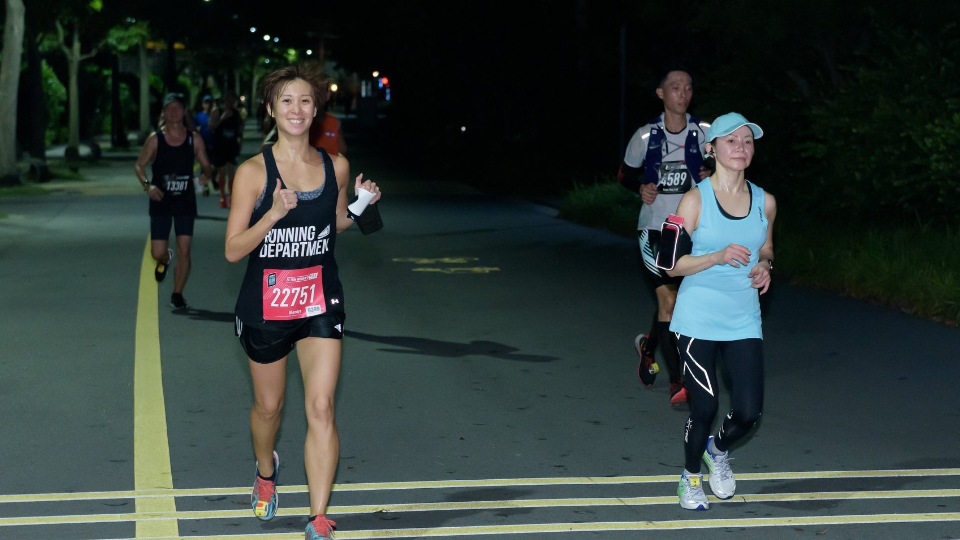
Being a Pacer makes me want to give back to the running community.
Glendys Lim
RS: What is the most memorable moment throughout your time in Pacer group?
Glendys: Training sessions, especially when conquering the LSDs together! We need each other to keep the journey a more enjoyable and less painful one.
My pacing teams will also carry speakers during our runs and sometimes we sing along together to lighten the mood and distract us from the ‘pain’ we experience during the run. Getting to know each other and sharing tips are part of which makes the training sessions memorable too.
RS: There are always ups and downs in a team, how do you all deal and overcome the hardship together?
Glendys: Pacers, just like runners, come from all walks of life, where we all have different personalities and ways of approaching certain things. Open and effective communication within the team is key. Willingness to share and listen plays a part in managing expectations too.
Team dynamics are extremely important in executing and delivering the pace assignment well not just during training sessions but also on race day.
Running Department’s Programme managers often encourage the pace team to have their own get-together, besides our training runs, so that everyone in the team can bond together and that really helps. One example would be deciding the race day strategy: how fast we should be running off our average pace. Each team must do their assessment during the training runs and thereafter come to a common agreement for race day execution.
RS: What is the one thing that has helped you throughout your running journey?
Glendys: Like-minded friends who run; we can relate to each other better. Not only can we train together, we can at the same time share the problems that we face juggling between other commitments and how to overcome them. Knowing that ‘you are not alone’ is comforting and it sure serves as support to keep one going.
RS: Do you have any advice for newcomers in the Pacer group?
Glendys: Don’t be shy (the fact that you have taken the first step to sign up as a pacer means you can’t be shy), be open to sharing your views, to listen and learn new things or get to know new friends, and most importantly, enjoy the process; for after race day, you will experience this thing called Withdrawal Syndrome (ironically where you actually start to miss the training sessions).
No one’s pacing journey is the same – we will have different takeaways from each pacing project and that’s how we learn from each other to be a better pacer / runner / person moving forward.
You can follow Glendys on Instagram: @lxy_glendys
3. Lee Wen Jie
Bio: Male Singaporean. Event Manager.
Wen Jie began participating in races in 2008 and this was quickly followed by an ultra-marathon, as well as many other races, including those overseas.
Wen Jie started his pacing journey with the Running Department back in 2018 and has since completed several pacing assignments for the Income Eco Run and the Standard Chartered Singapore Marathon.
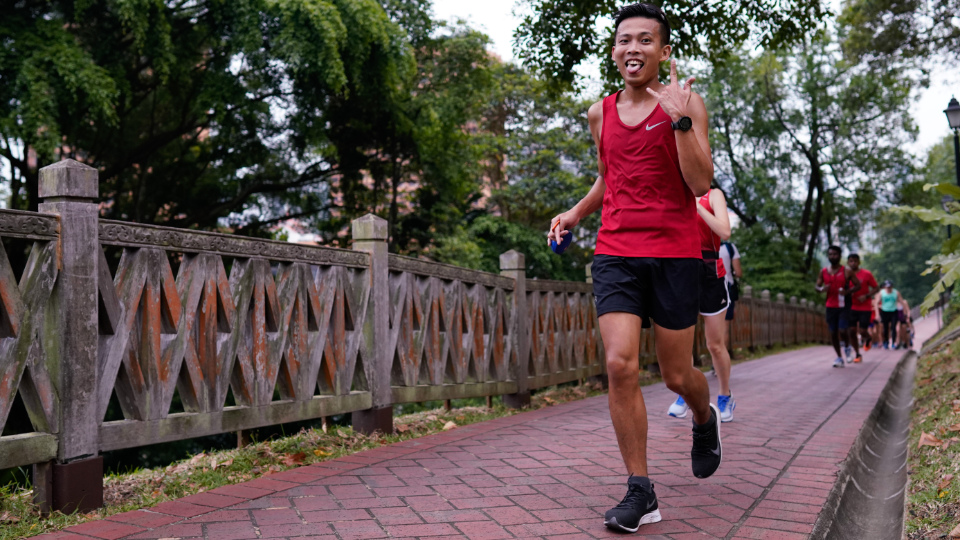
RS: What makes you want to become a Pacer?
Wen Jie: To become a Pacer, you don’t need to be a fast runner, but you do need to be community-driven. My main reason for wanting to be a Pacer is to help motivate runners and get them across the finish line within their goal range. I’m always glad that the Running Department gave me the opportunity to assist my fellow runners.
RS: What are the requirements to be a good Pacer?
Wen Jie: Being able to run at a steady pace (even splits) throughout the entire race, and encouraging runners along the way to keep going are crucial. Making conversation is tough because most people are racing, not talking (but at least they smile back!).
Offering them things to think about in the later miles of the race, such as telling them the next hydration point, the next upslope, or any uneven ground, can take their mind off the pain.
RS: What are the difficulties you faced as a pacer?
Wen Jie: To be honest, it would be the training programme. It requires a lot of commitment and discipline to find the time to train for the race.
Like other runners, we need to find a balance among family, work, and training. Without proper training, you can end up underperforming as a pacer on race day.
RS: To boost or enhance your running performance for races, what kind of training do you guys undergo to improve together as a team?
Wen Jie: We go through a 16-week training programme (for the full marathon), which includes our speed and strength workouts during Wednesday runs and running at an even split for Saturday long-distance runs. We also do our own runs to clock the weekly mileage, because two runs are never enough.
For Pacers who miss these two compulsory sessions, they must do a Make Up Run (MUR), which most of us try to avoid as it means finding time to run alone.
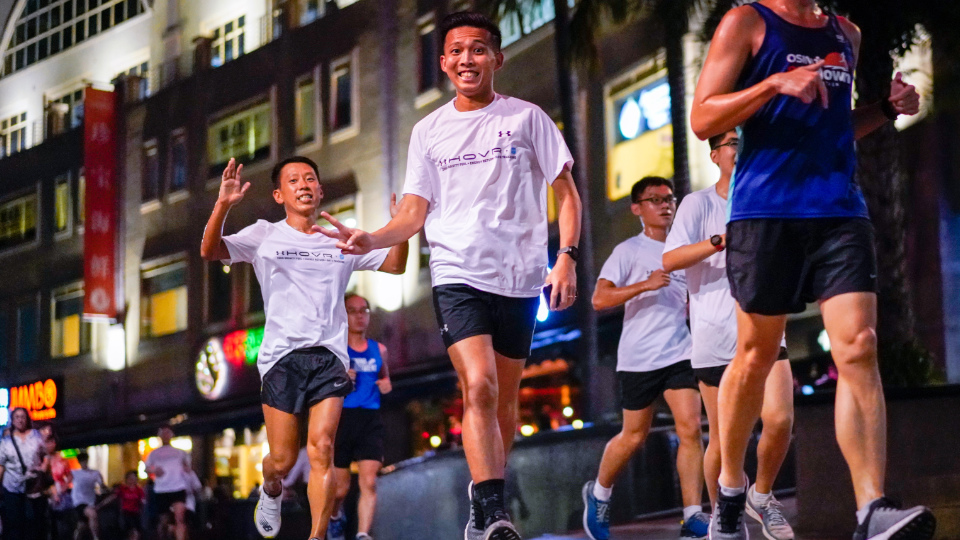
I want to be a Pacer because I want to help motivate runners and help them reach their target times.
Lee Wen Jie
RS: What is the most memorable moment throughout your time in the Pacer group?
Wen Jie: It will be the weekly run sessions together with the Pacer group and other public runners. As that is where you start to chit-chat and mingle with the Pacers and public runners. We share training tips and demonstrate our even split pacing strategy with them, getting to know them too.
RS: There are always ups and downs in a team, how do you all deal with and overcome the hardships together?
Wen Jie: Everyone has their own personality and expectations; we just have to be more understanding and take the effort to build a strong team. We don’t just come for our training runs; in fact, we look forward to having a meal together after the run too.
RS: What is the one thing that has helped you throughout your running journey?
Wen Jie: As the Zambian proverb says: “When you run alone, you run fast. When you run together, you run far.” It’s always good to have people running alongside, so that you are less likely to back out, and to ensure you aren’t slacking in your training.
RS: Do you have any advice for newcomers to the Pacer group?
Wen Jie: Team bonding plays a big part in the pacer project. You don’t just care for yourself; you care for them too. On race day, it’s not about becoming a spotlight in the start pen, or how glittery and glamorous you are as a pacer.
Think back to the few months of training you have had with your pacer group; remember this is not your race, the focus is to deliver as a group and get the job done. As a newcomer, take this assignment as a part of giving back to the running community, and create more friendships together.
You can follow Wen Jie on Instagram: @jiezalicious
4. Tang Chai Ling, Angel
Bio: Female Malaysian. Banker.
Since she was young, Angel has been running competitively, starting in secondary school. She was voted the best sportswoman throughout her secondary school years due to her numerous participations and achievements in running. However, she took a break to focus on her studies, but stayed active with other outdoor activities, including hiking and scuba diving.
In late 2011, she rekindled her passion for running when a friend encouraged her to start again by registering her for a 12km run. By the end of 2012, she had successfully completed her first full marathon at Sundown Singapore.
In early 2016, she was appointed as one of the Puma Pacers for the Puma Night Run 2016 and participated in the Puma Night Running Club (PNRC) weekly training sessions in Desa Park City, concluding the program in December 2018.
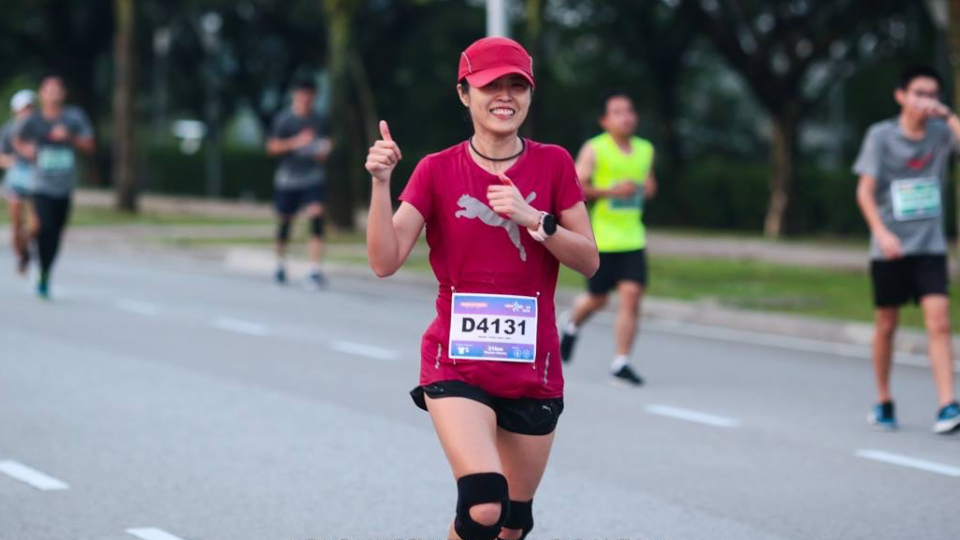
RS: What inspired you to become a Pacer?
Angel: Helping other runners achieve their target times is what inspired me to become a Pacer. It offers a different kind of achievement compared to racing. You experience a unique kind of self-satisfaction, and at the same time, the runners you help are happy too.
RS: Could you share the key qualities necessary to be an effective Pacer?
Angel: A consistent pace is absolutely essential. Beyond that, having the right mentality is key. You need to remind yourself that your role is to guide other runners, not to race. As a Pacer, controlling your pace is very important.
If you don’t maintain a consistent pace or control your designated pace, you might cause the runners following you to miss their targets. This means failing in your mission as a Pacer too.
RS: What challenges have you encountered in your journey as a Pacer?
Angel: One challenge I’ve faced is not being in optimum condition on the actual race day. This could hinder my performance and prevent me from maintaining the designated pace, leading to potential failure in my pacing duties.
RS: How do you train as a team to improve your running performance for races?
Angel: Consistency is key in our training. If you train intensively for two days and then stop for 3-4 days, you won’t see much improvement.

They will always be there for me, no matter how far I’ve fallen behind.
Tang Chai Ling, Angel
RS: Could you share a standout moment from your time in the Pacer group?
Angel: The most standout moment as a Pacer is definitely crossing the finish line on time. It’s so fulfilling when you’ve helped many runners hit or achieve their target times, and they express their gratitude. Some even give a big hug. It’s an incredibly satisfying feeling, quite unique to the running experience.
RS: As part of a team, you must face ups and downs. How do you navigate these challenges collectively?
Angel: When facing challenges, we discuss what can be done to improve the situation. It’s crucial never to hide things and always be open to feedback and discussion. This approach allows for self-reflection and continuous improvement.
RS: Can you name a significant way the team has supported you in your running journey?
Angel: The team’s never-give-up spirit has been invaluable. No matter how far I’ve fallen behind, I know they’re always there waiting for me, always there to support me.
RS: Do you have any advice for newcomers to the Pacer group?
Angel: My advice is to be selfless. Remember, this isn’t your race alone, it’s everybody’s race. Don’t forget you have a mission: to guide all the runners following you to the finish line within the targeted time.
You can follow Angel on Instagram: @babyangel3008
5. Achmad Fahrulrozi
Bio: Male Indonesian. Shoes Factory Staff.
Achmad, the fourth child in his family, discovered his passion for running five years ago and has been dedicated to the sport ever since.
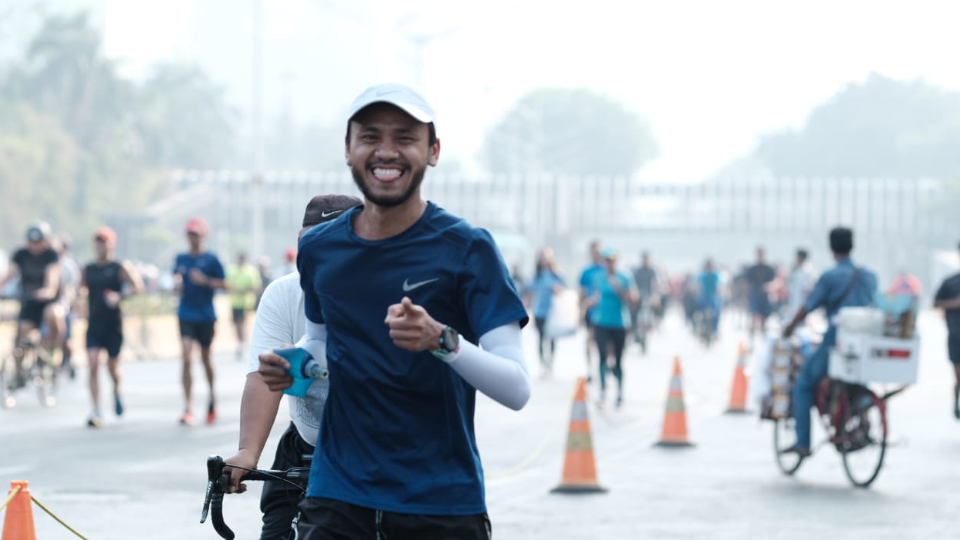
RS: Could you share what drives your desire to be a Pacer?
Achmad: What I love most about being a Pacer is the opportunity to motivate and encourage others to reach their Personal Best (PB). It gives me immense joy to see the beaming smiles of the runners when they manage to finish on target.
RS: What, in your view, are the prerequisites for being an effective Pacer?
Achmad: Apart from having a strong mental disposition, adhering to a good training plan and committing to their responsibilities as a Pacer are crucial. A comprehensive training plan ensures the Pacer is prepared for any race category, while a strong commitment enhances the brand’s reputation.
RS: Can you discuss some challenges you’ve faced in your role as a Pacer?
Achmad: The main challenge lies in teamwork. When multiple heads come together, each with different thoughts, it inevitably leads to a mix of opinions and debates.
RS: To enhance your running performance for races, what form of training do you collectively undergo as a team?
Achmad: Each Pacer is expected to accumulate a specific total of weekly mileage, based on the race category assigned to them. This practice helps to build and maintain stamina for each Pacer.
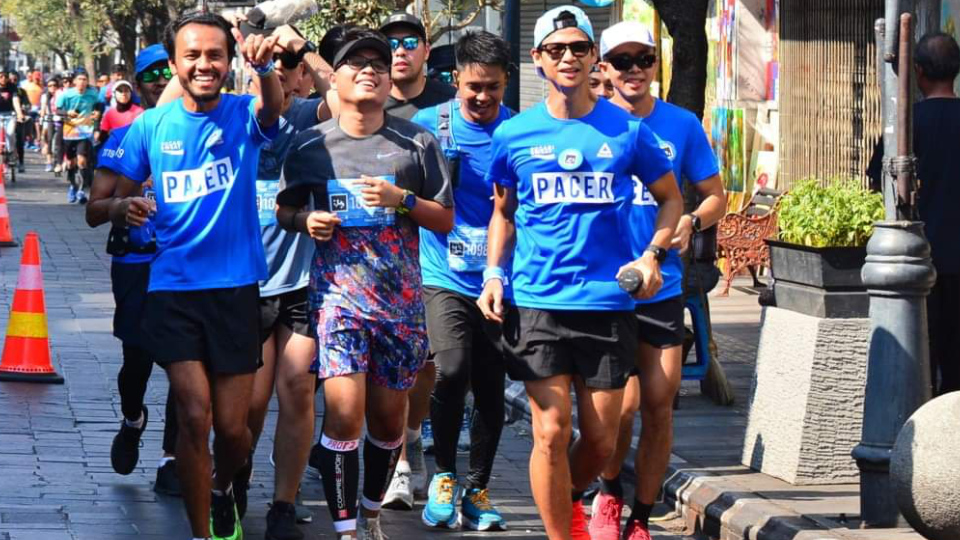
I love to motivate and encourage others. Seeing the runners’ smiles is a pleasure for me.
Achmad Fahrulrozi
RS: Could you share the most unforgettable experience you’ve had with the Pacer group?
Achmad: In my view, every race I’ve participated in with the Pacer group counts as the best moment of my life.
RS: Every team encounters challenges. How does your team handle and overcome these hardships?
Achmad: We approach all problems and obstacles as a team, discussing and addressing them with the help of the management.
RS: Could you tell us about a significant way the team has assisted you in your running journey?
Achmad: The experts from our sponsoring team have been instrumental, providing us with new knowledge and insights into the running world.
RS: What advice would you give to someone joining the Pacer group for the first time?
Achmad: The core values in this group are commitment and loyalty. Those are paramount.
You can follow Achmad on Instagram: @roziachmad12
6. Leonard Tai Woei Ren (Leo Wai)
Bio: Male Malaysian. Branch Manager.
Originally from Sabah, Leo Wai has been working in Kuala Lumpur since 2003. He started running in 2014 due to health problems and made the decision to quit smoking permanently. He transitioned from being a smoker to becoming an ultramarathoner.
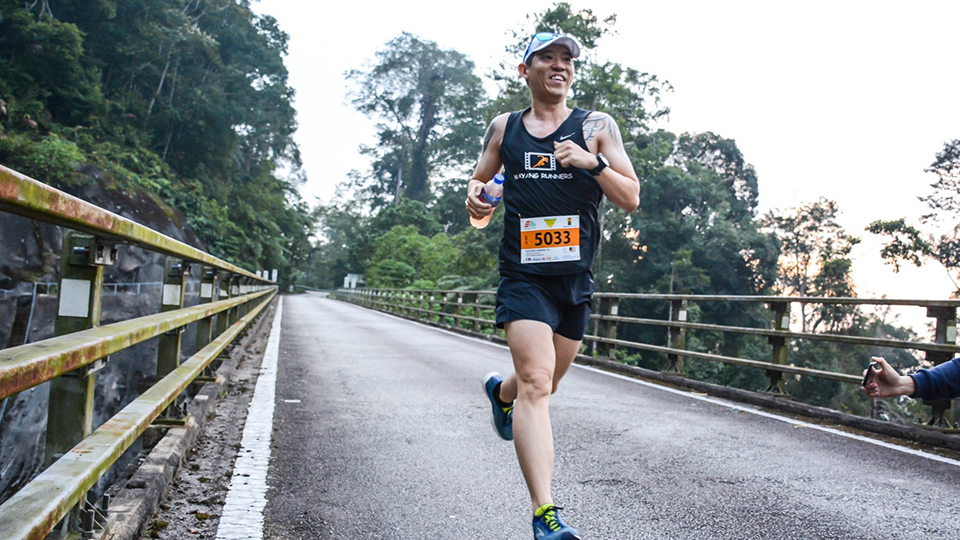
RS: Can you share what sparked your interest in becoming a Pacer?
Leo Wai: My journey as a Pacer began with the PJ Half Marathon in 2016, where I was a 2:15 timing half marathon pacer. This opportunity was offered to me by a running friend.
I finished with a time of 2:14:50. The joy and satisfaction derived from leading participants and helping them achieve their time goals are immeasurable and wonderful.
RS: In your view, what attributes does an effective Pacer need to have?
Leo Wai: An effective Pacer needs to be consistent in training and must thoroughly study the race information. Some races might exceed the designated distance, so runners need to know the buffer timing to avoid complications due to this over distance. Knowledge about water station locations is vital for all runners.
RS: Can you share some challenges you’ve encountered as a Pacer?
Leo Wai: One of the unpredictable elements we face is our own health. Sometimes, we might not feel well on race day due to various reasons. If anything goes wrong halfway, we may have to make the tough choice to cut the balloon and stop leading.
Once you take up the pacing balloon, any mistakes can lead to misguiding some pacers with the wrong timing. That’s why Pacers always have a significant responsibility in any race.
RS: What type of training regime do you and your team follow to enhance your running performance for races?
Leo Wai: Every Tuesday night, I train with the Alam Damai Runners for speed work, which includes intervals, fartlek, hill repetition, and more. Other weekdays might include a tempo and easy run, and weekends are reserved for my long-distance run training (LSD).
Training in a group always has the advantage of mutual motivation and focus, which helps us successfully complete our training routines.

The joy and happiness that come from helping participants achieve their targeted time at the finish line are priceless and wonderful.
Leonard Tai Woei Ren
RS: Could you recount a particularly memorable moment during your tenure in the Pacer group?
Leo Wai: One standout moment for me is the opportunity to encourage runners not to give up, and help them achieve their personal best times. They might not be as fast as the podium runners, but seeing them run and improve is a bonus for every runner.
As a half or full marathon pacer, I always bring along cramp spray to aid runners who experience cramps, hoping they can continue and finish the race without giving up.
RS: Team dynamics often involve highs and lows. How does your team deal with and overcome challenges?
Leo Wai: We often say that we can’t calm the storm, so we should stop trying. Instead, we work on calming ourselves, knowing that every storm will pass. The spirit of a runner never ends.
RS: Can you share how the Pacer group has supported your personal running journey?
Leo Wai: I’ve been fueled by the positive energy and vibes from runners. We’re all the same, we all have just 24 hours in a day. Sometimes we don’t want to run, sometimes we fail or are unable to run due to injury, but we’re always motivated to stay strong.
RS: What piece of advice would you give to newcomers to the Pacer group?
Leo Wai: I would advise them to just run and have fun.
You can follow Leo Wai on Instagram: @leowai83
Running Together: The Selfless Pursuit of Being a Pacer
In conclusion, the role of a pacer goes far beyond setting the pace. It’s about creating a supportive and inspiring atmosphere, about building relationships, and about assisting runners in achieving their personal bests.
From overcoming hardships to creating unforgettable memories, the journey of a pacer is undoubtedly demanding, yet incredibly rewarding.
As you’ve read these inspiring stories, consider this: What could your impact be if you decided to become a pacer? Could you be the difference that helps a fellow runner cross the finish line?
If running is your passion, consider joining this community of selfless pacers – it could transform your running journey in ways you’ve never imagined.
Remember, in the world of running, we go farther when we go together.
What is a pacer in running?
A pacer, also known as a pace-setter or rabbit, is an experienced runner who leads a group of runners in a race with the aim of helping them finish in a specific time. They maintain a steady pace throughout the race, offering a reliable speed guide for other runners.
How does a pacer help in a marathon?
A good pacer helps marathon runners by maintaining a consistent speed throughout the race, providing a reference for runners to gauge their own pace. Pacers can help runners avoid starting too fast, manage their energy better, and reach their desired finish times.
How can I become a good pacer?
Becoming a good pacer requires consistent training, strong mental strength, and commitment to your responsibilities. It’s also essential to understand the race course and conditions, have good time management, and be able to motivate and support other runners.
What are the challenges of being a good pacer?
Pacers can face a variety of challenges, such as maintaining a consistent pace throughout the race, dealing with unexpected circumstances like sickness or extreme weather, and managing the expectations and emotions of the runners in their group.
Can being a pacer improve my own running?
Yes, being a pacer can improve your own running by helping you build discipline, improve pacing skills, and increase your understanding of race strategies. It also provides the opportunity to train regularly and consistently.



